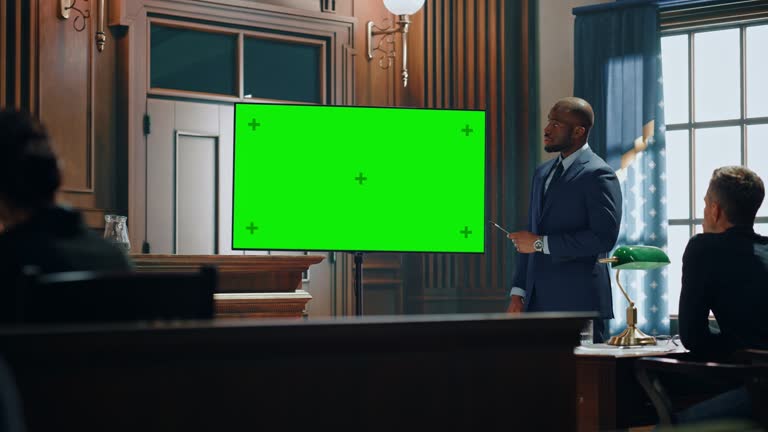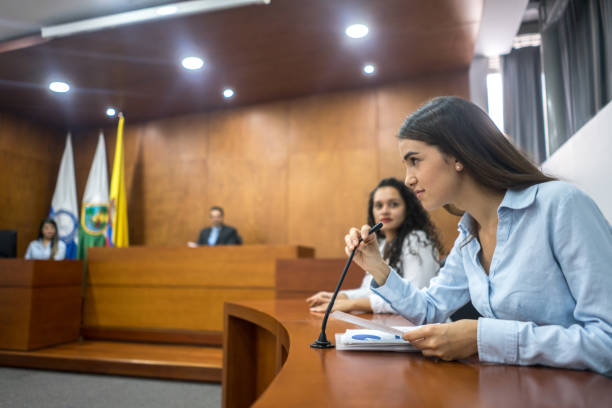Necessary Skills for Crafting Convincing Trial Presentations: A Comprehensive Overview
Necessary Skills for Crafting Convincing Trial Presentations: A Comprehensive Overview
Blog Article
Navigating the Intricacies of Test Presentations: Tips for Seamless Distribution and Compelling Debates
In the world of legal procedures, the art of trial presentation stands as a critical determinant of success. As lawyers browse the detailed web of court dynamics, the capability to effortlessly deliver debates and evidence while mesmerizing the court's interest comes to be critical. The complexities fundamental in test discussions require a fragile equilibrium of finesse, technique, and ability. By developing strategies that make certain a sleek delivery and crafting compelling arguments that reverberate with the target market, attorneys can dramatically improve their advocacy. In a globe where persuasion reigns supreme, mastering the complexities of trial presentations is not simply an option but a necessity for those looking for to dominate in the court room.

Recognizing Trial Objectives
To efficiently navigate a trial, it is crucial to have a clear understanding of the goals that need to be achieved. Prior to entering the court, legal groups need to specify their goals and desired results. These purposes offer as directing concepts throughout the trial, forming techniques and affecting decision-making processes.
Comprehending trial goals includes a thorough analysis of the instance, lawful precedents, and the client's benefits. Trial Presentations. It calls for a precise exam of the facts, recognizing crucial concerns, and preparing for possible difficulties. By establishing details and measurable objectives, attorneys can customize their discussions and debates to straighten with the wanted results
Moreover, a clear grasp of test objectives makes it possible for lawful teams to focus on proof, witnesses, and lawful debates properly. It permits the development of a meaningful story that reverberates with the court and court, reinforcing the overall instance presentation.

Organizing Proof Efficiently
Having a clear understanding of trial purposes lays the structure for organizing evidence properly in lawful procedures - Trial Presentations. By lining up the discussion of evidence with the desired outcomes of the test, legal teams can enhance their disagreements and enhance their persuasiveness. One crucial element of arranging proof is categorization. Grouping proof based upon motifs or significance to details legal components can aid streamline the presentation and make complicated details a lot more absorbable for the court or jury.
One more key component in organizing evidence properly is establishing a sensible flow. Presenting evidence in a consecutive and meaningful way can aid develop a compelling narrative that supports the legal debates being made. In addition, making use of aesthetic aids such as graphes, timelines, or graphs can further improve the company of evidence and assist in clarifying complicated connections or series of occasions.
Furthermore, ensuring that all evidence presented is pertinent and admissible to the situation is important. Inadmissible or unimportant proof can diminish the strength of the disagreement and potentially harm the integrity of the here and now party. A precise review and choice process should be embarked on to include only the most impactful and legally sound evidence in the trial presentation.
Crafting Influential Stories
Crafting compelling narratives plays an essential function in presenting influential arguments during legal process. A well-crafted narrative has the power to captivate the target market, evoke feelings, and eventually sway the decision for the providing party. When building a narrative for a test discussion, it is important to develop a clear storyline that highlights bottom lines and links them in a coherent fashion. Begin by outlining the truths of the instance in an engaging manner, making certain that the series of events is very easy to adhere to. Introduce personalities properly, giving history details that aids the audience understand their actions and motivations. Additionally, incorporating dazzling descriptions and interesting language can bring the narrative to life, making it extra memorable for the discretionary. By weaving together proof, statement, and lawful arguments right into a natural and persuasive story, lawyers can effectively support for their clients and raise the likelihood of a desirable result in the court room.
Grasping Aesthetic Aids
Effective use aesthetic aids is key to enhancing the impact and clarity of trial discussions. Visual help, when utilized purposefully, have the power to streamline complicated details, reinforce essential factors, and leave a lasting perception on the discretionary. To master visual help in trial discussions, it is important to ensure that they are clear, succinct, and appropriate to the debates being made.
When including visual help, such as graphes, timelines, graphs, or pictures, right into a test presentation, it is essential to keep them visually appealing yet specialist. The visuals need to match the spoken disagreements, offering a graph of the information being talked about without overwhelming the audience with unnecessary details.
In addition, exercising with the aesthetic aids beforehand is imperative to Your Domain Name ensure a seamless delivery throughout the trial. Acquainting oneself with the material, transitions, and timings of each aesthetic help can assist maintain the flow of the discussion and prevent technological problems that may arise.
Delivering Impactful Closing Disagreements
An engaging closing disagreement serves as the end result of a trial presentation, enveloping the core narrative and convincing the court and jury towards a positive choice. Begin by describing the main disagreements that support your customer's setting, highlighting why the proof provided throughout the trial supports your story.
In addition, incorporating psychological allure can additionally enhance your closing disagreement. Ultimately, a well-crafted closing argument should leave a long-term impression, compelling the court and jury to rule in your client's favor.
Final Thought
To conclude, mastering trial presentations entails understanding purposes, organizing evidence, crafting narratives, utilizing aesthetic aids, and providing impactful closing arguments. By implementing these approaches efficiently, lawyers can provide their case seamlessly and make compelling arguments in the court. It is crucial to navigate the complexities of trial discussions with accuracy and ability to attain success in lawful procedures.
By straightening the presentation of evidence with the preferred end results of the test, legal groups can strengthen their arguments and boost their persuasiveness (Trial Presentations). To understand aesthetic aids in test discussions, it is crucial to ensure that they are clear, concise, and relevant to the disagreements being made
A compelling closing debate offers as the culmination of a test discussion, encapsulating the core story and encouraging the judge and jury in the direction click of a desirable decision. Begin by describing the major disagreements that sustain your client's placement, highlighting why the proof offered throughout the trial Resources sustains your narrative.In conclusion, grasping test presentations entails understanding purposes, organizing proof, crafting narratives, using aesthetic help, and supplying impactful closing arguments.
Report this page